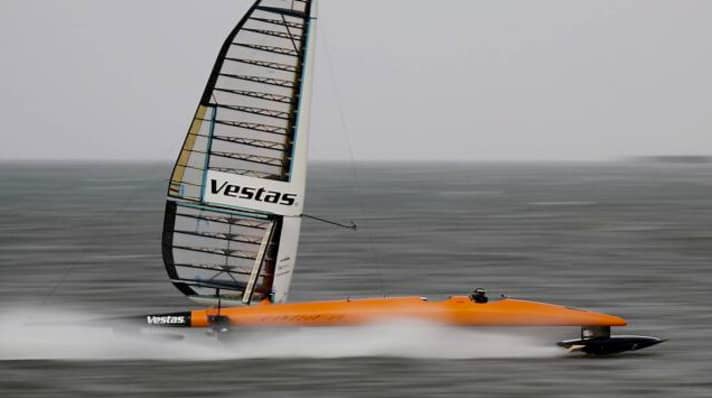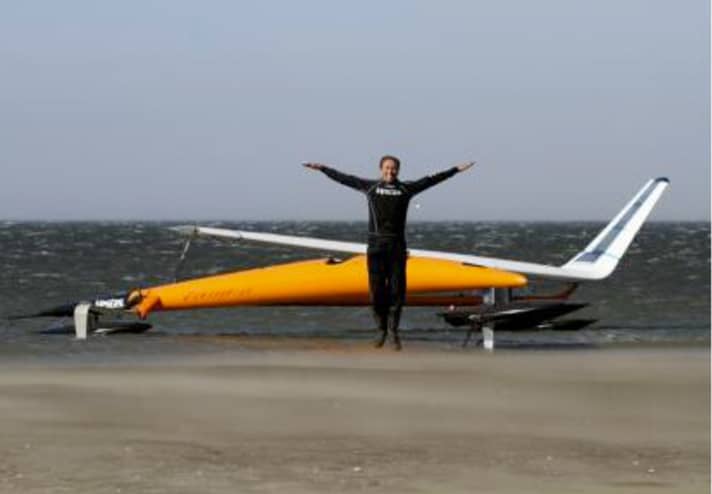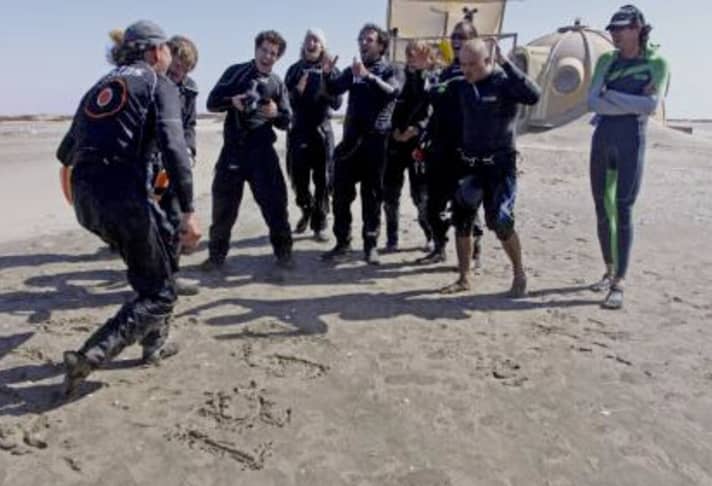

If you want to be the fastest sailor on the water now, you have to really step on the gas and perhaps develop a completely new approach to the design and construction of the vehicle. Because Larsen gave his "Vestas Sailrocket 2" another good spurring after the records of the previous week and, with an average speed of 65.45 knots (121.2 km/h) over the 500 metre measuring distance, set a value that was previously only considered possible in theory at best. Ratification by the World Sailing Speed Record Council is still pending. But that should only be a formality. In any case, Larson's new average is more than six knots above his last record of 59.38 knots and almost ten knots above the old record of kiteboarder Rob Douglas, who wants to beat it again this week in the south of France on a specially constructed channel.
But for now, Larsen is the hero. And that's how he took things on Saturday: "It's 10:17 and the wind is already blowing through ... This is the first day with a really big breeze in more than six weeks. Today we are focussing exclusively on the absolute record of over 60 knots," he said on his blog. He was cautiously optimistic because last week the project finally broke the records that had been promised over and over again for eleven years.

Until now, Larsen says, strong winds were needed to explore the possibilities of the vehicle and develop it further. But that is now a thing of the past. Now they are used to sailing 2.4 to 2.5 times faster than the wind. Saturday also promised a good 30 knots of wind, which in itself was not a problem, but Larsen admitted that it was difficult to assess the curve of increasing frictional resistance in such conditions. Is it growing steadily, or are you literally driving into a wall? "On paper, cavitation (a strong braking effect on the wings, ed.) should start at 65 knots." But paper, Larsen hinted, is patient.

The boat develops gigantic forces, and at 7 Beaufort and with a tight wing sail, there will be a hell of a fight between the wing and the aerofoil in 65 to 70 knots of apparent wind (roughly equivalent to wind force 12). In order to moderate this tug-of-war between lift and frictional resistance as much as possible, the angle of attack of the main wing was reduced by 0.25 degrees. In addition, the fin that determines the "flight height" of the leeward support float was adjusted in the hope of improving the control behaviour. And additional aerodynamic fairings were fitted to the transom. Sailrocket 2" was thus equipped.

The entry ended with the words: "Yes, I'm nervous. It's a big day."
Larsen was proved right.
To the Team page
